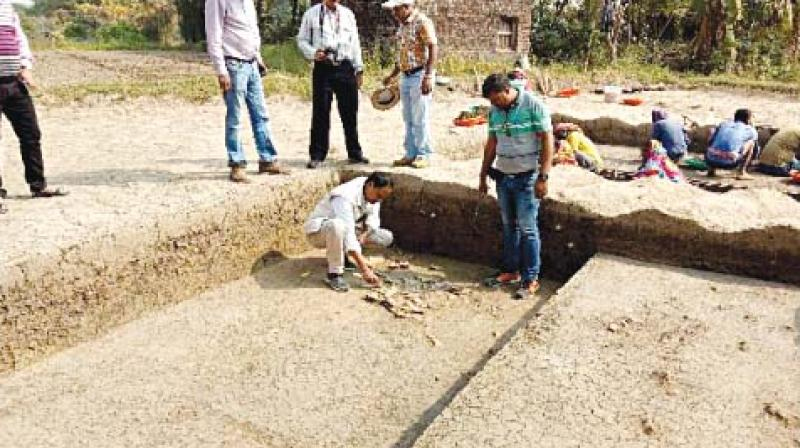4000 year old settlement
Why in News?
- The Odisha Institute of Maritime and South East Asian Studies (OIMSEAS), an archaeological wing of the State government, has discovered a 4,000-year-old settlement and ancient artifacts in Balasore district of Odisha.
- After uncovering traces of fortified early historic sites near Balasore town, the OIMSEAS had sought permission from the Archaeological Survey of India (ASI) to document the site at the Durgadevi village.
About the excavation

- Archaeologists have come across distinct traces of three cultural phases at the excavation site — Chalcolithic (2000 BCE to 1000 BCE), the Iron Age (1000 BCE to 400 BCE) and the Early Historic Period (400 BCE to 200 BCE).
- Excavation was started with an aim to correlate the simultaneous growth and development of maritime activities, and urbanisation in the east coast of India, linking the Ganga valley in north and the Mahanadi valley in central Odisha, more particularly to focus on early cultural development in northern Odisha
- Archaeologists have come across a human settlement, and artifacts belonging to the Chalcolithic period.
From Chalcolithic Period
- The major discovery of the Chalcolithic period of Durgadevi is the base of a circular hut, black on red painted pottery, black slipped ware, red slipped ware, and copper objects. The floor of the circular hut is rammed with red soil.
- From the base of the circular hut and the utilitarian objects found, the lifestyle of the people has been derived. People were mostly leading a settled life and had started agriculture, and domestication of animals and fishing.
From Iron Age Period
- Similarly, the cultural material evidence and remains found from the Iron Age phase include pottery, remains of black burnished ware, black and red ware, iron objects like nails, arrow heads, and crucible and slag of various kinds belonging to the Iron Age.
- The use of iron is a landmark phase in the growth of civilisation in Odisha, particularly in north Odisha. There are several Iron Age sites discovered by archaeologists in the upper and middle Mahanadi valley, but in north Odisha, this is the first site.
From Early Historic Period
- Cultural materials from the early historic period such as pottery specimens of red ware, terracotta ear studs, bangles, beads, and some conical objects, were also discovered from the site.
- The lifestyle of the people, which is derived from the cultural materials, was very improved at that time, from an agricultural base to trade and construction of fortification around the site with a moat, which signify the emergence of urbanisation at Durgadevi around 400 BCE to 200 BCE.
Reference:
Subscribe
Login
0 Comments
